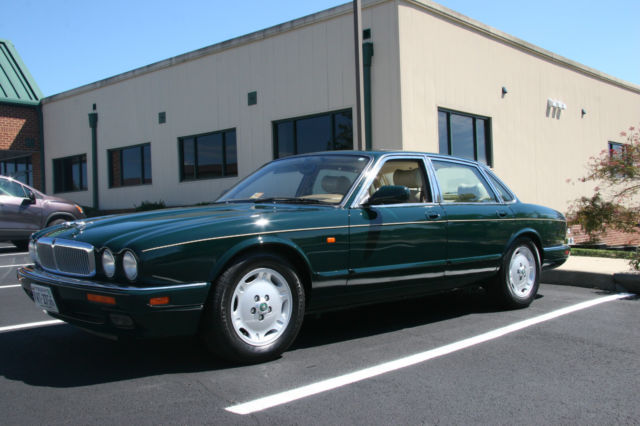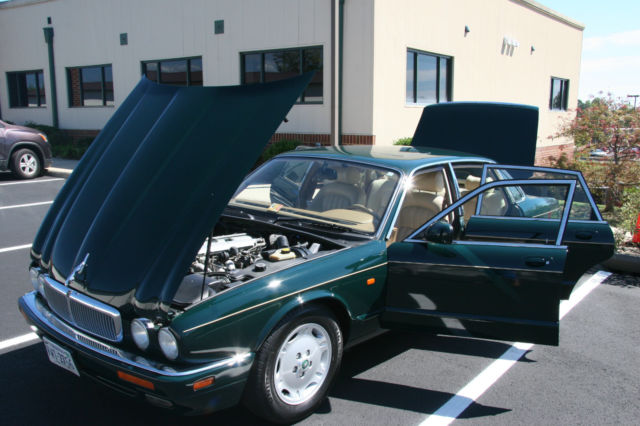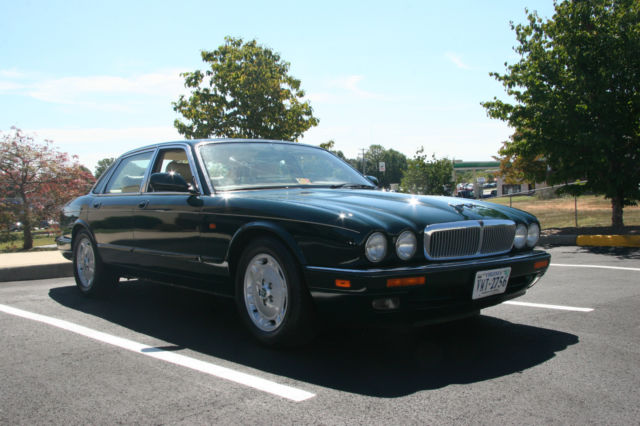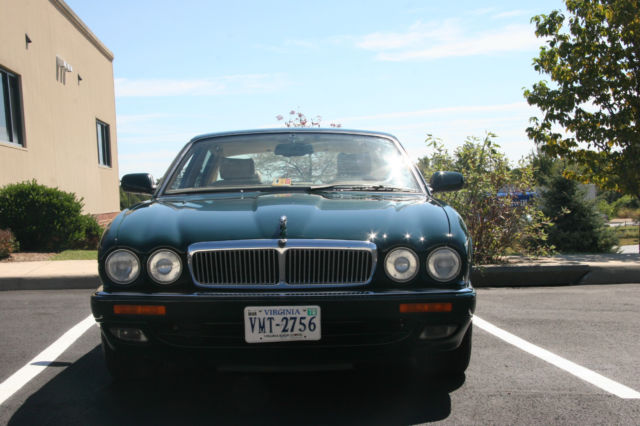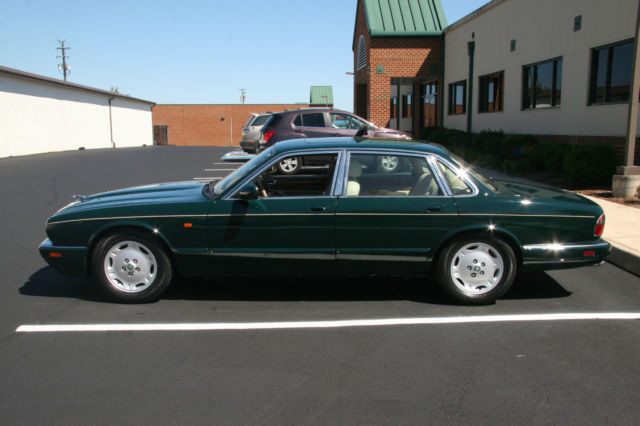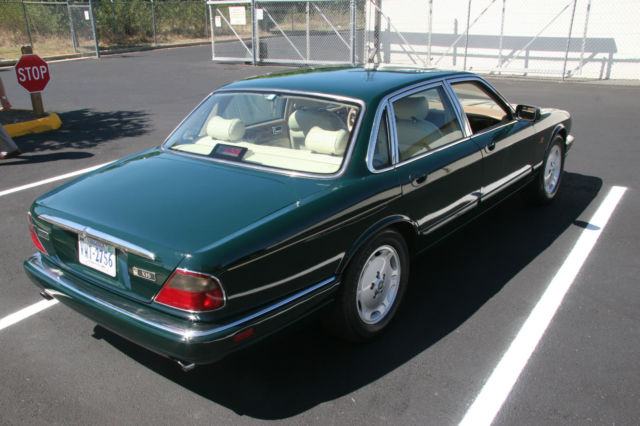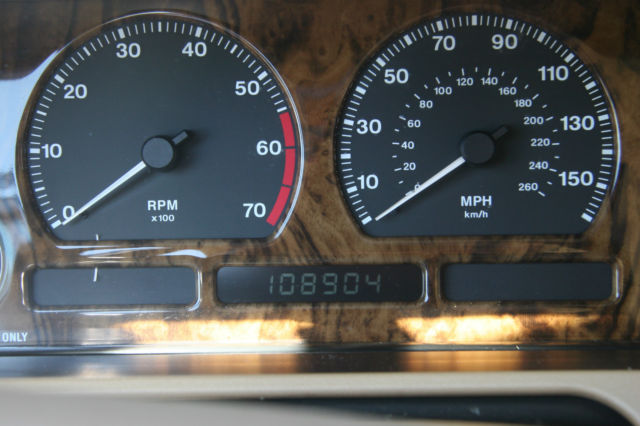British Racing Green new paint, interior/mechanical recent fixes ready to drive!
- Make: Jaguar
- Model: XJ6
- SubModel: XJ6
- Type: Sedan
- Trim: XJ6
- Year: 1995
- Mileage: 108,000
- VIN: sajhx1746sc726011
- Color: Green
- Engine size: 4.0 inline 6 smooth Jaguar power
- Number of cylinders: 6
- Power options: Air Conditioning, Cruise Control, Power Locks, Power Windows, Power Seats
- Fuel: Gasoline
- Transmission: Automatic
- Drive type: RWD
- Interior color: Tan
- Safety options: Anti-Lock Brakes, Driver Airbag
- Options: Cassette Player, CD Player, Leather Seats, Sunroof
- Vehicle Title: Clear
- Interested?
1995 Jaguar XJ6 XJ6 Description
- New full body paint job British Racing Green!
- Is there any other color to own a Jaguar or a British car? Looks great.
- Headliner fixed as well, plus other mechanical fixes this car was completely gone over to get it ready for new owner and anything that needed fixing or freshening up was addressed.
- There was a slight issue with the throttle that was fixed and replaced.
- Low miles for the year, this car was babied and cherished as an occasional use car stored in the garage.
- This is my grandfather in laws car. He has parkinsons and is downsizing his car collection and has difficulty getting in and out of such a low sedan otherwise he would keep using and enjoying it.
- Get a great car where a lot of money was recently spent on it for a deal no where near what you'd have to spend fixing up a used up example that was not well cared for.
- Inline 6 is a great engine.
- Transmission shifts.
- Everything in this car works well.
- Southern car not used in winters.
- I have more photos, please ask.
- CD Changer
- Newish tires full tread
- Starts right up strong battery
- I have sold many cars,motorcycles,tractors etc to satisfied buyers on ebay.
- 100% feedback score, on ebay since 2008.
- Come inspect in person before end of auction or have it shipped to you at your expense.
- No reserve auction.
- Bid only if ready to follow through with auction terms and purchase if you win.
- Highest bidder get's this car. I do not withdraw my listings.
- Car is in good usable 22 year old shape but is sold as is.
- Good enough for the Queen!
- Well kept Xj's are gaining in popularity and interest.
TheJaguar XJ (X300)is a luxury sedan manufactured byJaguar Carsbetween 1994 and 1997. It was the firstXJproduced entirely underFordownership, and can be considered an evolution of the outgoingXJ40generation. Like all previous XJ generations, it features theJaguar independent rear suspensionarrangement. The design of the X300 placed emphasis on improved build quality, improved reliability, and a return to traditional Jaguar styling elements.[1][2]
At the car's launch in October 1994 at theParis Motor Show, Jaguar marketing material made use of the phrase "New Series XJ" to describe the X300 models. The X300 series represented the result of a £200 million facilities renewal program by Ford.[3]The program introduced state-of-the-art automated body welding robots manufactured byNissan, and was intended to show the future direction of the British auto industry.
To honour Jaguar's achievements,Queen Elizabeth IIvisited theBrowns Lane factoryin December 1994, and ordered a British Racing Green X305 Daimler Double Six for her personal use.[3]This was the Queen's second visit to Jaguar's Coventry factory since 1956.
The normally aspirated six-cylinder X300 cars used either a ZF four-speed automatic gearbox (4HP-22on the 3.2L and4HP-24on the 4.0L),[4]or aGetrag290 five-speed manual. The 4HP-22 automatic is mechanically controlled while the 4HP-24 is electronically controlled, allowing 4.0-litre models to offer 'normal' and 'sport' modes on a switch by the gear lever. This switch is replaced with a blanking plate on the 3.2L. The supercharged six-cylinder in the XJR was normally built with the optionalGM 4L80-Efour-speed automatic and very few XJRs were ordered with the standard specification Getrag 290. All V12-equipped cars were built with the GM 4L80-E automatic. In certain markets, such as North America, no manual gearbox was offered.
The X300 was the first XJ to be affected directly by Jaguar's takeover (in 1990) by theFord Motor Company. According to David Versical ofAutomotive News, Ford's influence was evident more in terms of "product development processes than its parts bin".[5]However, Versical added that the XJ's new "traction controlsystem came via Ford'sMondeoprogram" and it also featured "aNippondensoair conditioner sourced through Ford's purchasing channels."
The X300 was latterly available in both short- and long-wheelbase body styles and in various trim levels. Some markets had a limited selection of X300 models or features. For example, the North American XJ6 was only available with the 4.0L engine, and all cars sold there were equipped with alloy wheels, a leather interior, and air conditioning. North America did not receive the Sovereign, Sport, Executive, or Century models, nor was a manual transmission offered.
Power folding mirrors were standard in Japan and optional in all other markets except the USA.
Aesthetically, the X300 received several updates in the design refresh led byGeoff Lawsonin 1991. The mostly flat bonnet of the XJ40 was replaced with a fluted, curvaceous design that accentuated the four separate round headlamps. Rear wings were reshaped to accommodate the new wrap-around rear light clusters. Also, the separate black-rubber bumper bar of the XJ40 is gone and replaced with a fully integrated body-coloured bumper.
The Jaguar "leaper" hood mascot was installed only on cars for non-European markets.
The interior of the X300 was similar to that found in the XJ40, with some revisions. The seats were updated to have a more rounded profile, wood trim was updated with bevelled edges, and the steering wheel was redesigned.
Early X300 cars were built without a front passenger glove-box, due to space constraints caused by the introduction of a front-passengerairbag.
It featured a Jaguar XJ6: a boy, dismounting his bicycle, presses his nose flat to a showroom window behind which purrs Jaguar’s feline seductress. The tag-line? “Some day, some day.”
- New full body paint job British Racing Green!
- Is there any other color to own a Jaguar or a British car? Looks great.
- Headliner fixed as well, plus other mechanical fixes this car was completely gone over to get it ready for new owner and anything that needed fixing or freshening up was addressed.
- There was a slight issue with the throttle that was fixed and replaced.
- Low miles for the year, this car was babied and cherished as an occasional use car stored in the garage.
- This is my grandfather in laws car. He has parkinsons and is downsizing his car collection and has difficulty getting in and out of such a low sedan otherwise he would keep using and enjoying it.
- Get a great car where a lot of money was recently spent on it for a deal no where near what you'd have to spend fixing up a used up example that was not well cared for.
- Inline 6 is a great engine.
- Transmission shifts.
- Everything in this car works well.
- Southern car not used in winters.
- I have more photos, please ask.
- CD Changer
- Newish tires full tread
- Starts right up strong battery
- I have sold many cars,motorcycles,tractors etc to satisfied buyers on ebay.
- 100% feedback score, on ebay since 2008.
- Come inspect in person before end of auction or have it shipped to you at your expense.
- No reserve auction.
- Bid only if ready to follow through with auction terms and purchase if you win.
- Highest bidder get's this car. I do not withdraw my listings.
- Car is in good usable 22 year old shape but is sold as is.
- Good enough for the Queen!
- Well kept Xj's are gaining in popularity and interest.
- Car is in Ruckersville,VA not Roseland, I entered the wrongzip code 22967 instead of 22968. Thanks.
- Happy bidding, highest bid wins this big purring Cat!
TheJaguar XJ (X300)is a luxury sedan manufactured byJaguar Carsbetween 1994 and 1997. It was the firstXJproduced entirely underFordownership, and can be considered an evolution of the outgoingXJ40generation. Like all previous XJ generations, it features theJaguar independent rear suspensionarrangement. The design of the X300 placed emphasis on improved build quality, improved reliability, and a return to traditional Jaguar styling elements.[1][2]
At the car's launch in October 1994 at theParis Motor Show, Jaguar marketing material made use of the phrase "New Series XJ" to describe the X300 models. The X300 series represented the result of a £200 million facilities renewal program by Ford.[3]The program introduced state-of-the-art automated body welding robots manufactured byNissan, and was intended to show the future direction of the British auto industry.
To honour Jaguar's achievements,Queen Elizabeth IIvisited theBrowns Lane factoryin December 1994, and ordered a British Racing Green X305 Daimler Double Six for her personal use.[3]This was the Queen's second visit to Jaguar's Coventry factory since 1956.
The normally aspirated six-cylinder X300 cars used either a ZF four-speed automatic gearbox (4HP-22on the 3.2L and4HP-24on the 4.0L),[4]or aGetrag290 five-speed manual. The 4HP-22 automatic is mechanically controlled while the 4HP-24 is electronically controlled, allowing 4.0-litre models to offer 'normal' and 'sport' modes on a switch by the gear lever. This switch is replaced with a blanking plate on the 3.2L. The supercharged six-cylinder in the XJR was normally built with the optionalGM 4L80-Efour-speed automatic and very few XJRs were ordered with the standard specification Getrag 290. All V12-equipped cars were built with the GM 4L80-E automatic. In certain markets, such as North America, no manual gearbox was offered.
The X300 was the first XJ to be affected directly by Jaguar's takeover (in 1990) by theFord Motor Company. According to David Versical ofAutomotive News, Ford's influence was evident more in terms of "product development processes than its parts bin".[5]However, Versical added that the XJ's new "traction controlsystem came via Ford'sMondeoprogram" and it also featured "aNippondensoair conditioner sourced through Ford's purchasing channels."
The X300 was latterly available in both short- and long-wheelbase body styles and in various trim levels. Some markets had a limited selection of X300 models or features. For example, the North American XJ6 was only available with the 4.0L engine, and all cars sold there were equipped with alloy wheels, a leather interior, and air conditioning. North America did not receive the Sovereign, Sport, Executive, or Century models, nor was a manual transmission offered.
Power folding mirrors were standard in Japan and optional in all other markets except the USA.
Aesthetically, the X300 received several updates in the design refresh led byGeoff Lawsonin 1991. The mostly flat bonnet of the XJ40 was replaced with a fluted, curvaceous design that accentuated the four separate round headlamps. Rear wings were reshaped to accommodate the new wrap-around rear light clusters. Also, the separate black-rubber bumper bar of the XJ40 is gone and replaced with a fully integrated body-coloured bumper.
The Jaguar "leaper" hood mascot was installed only on cars for non-European markets.
The interior of the X300 was similar to that found in the XJ40, with some revisions. The seats were updated to have a more rounded profile, wood trim was updated with bevelled edges, and the steering wheel was redesigned.
Early X300 cars were built without a front passenger glove-box, due to space constraints caused by the introduction of a front-passengerairbag.
It featured a Jaguar XJ6: a boy, dismounting his bicycle, presses his nose flat to a showroom window behind which purrs Jaguar’s feline seductress. The tag-line? “Some day, some day.”
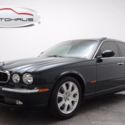 Low Miles V8 Classic British Racing Green
Low Miles V8 Classic British Racing Green
Mileage: 44,309
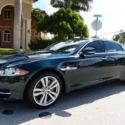 ONLY 20K Miles Every Option British Racing Green.
ONLY 20K Miles Every Option British Racing Green.
Mileage: 22,003
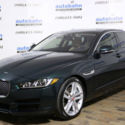 XE 35t Premium RWD Mgr Demonstrator British Racing Green
XE 35t Premium RWD Mgr Demonstrator British Racing Green
Mileage: 3,040
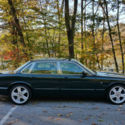 1998 Jaguar XJR low miles,British Racing green
1998 Jaguar XJR low miles,British Racing green
Mileage: 89,119
 1998 Jaguar XJ8L British Racing Green
1998 Jaguar XJ8L British Racing Green
Mileage: 141,000
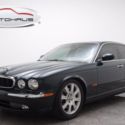 British Racing Green Jaguar XJ with 44309 Miles available now!
British Racing Green Jaguar XJ with 44309 Miles available now!
Mileage: 44,309
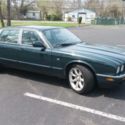 2000 Jaguar XJR Supercharged British Racing Green
2000 Jaguar XJR Supercharged British Racing Green
Mileage: 80,200
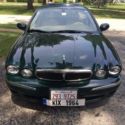 2003 British Racing Green Jaguar 2.5 AWD Sedan
2003 British Racing Green Jaguar 2.5 AWD Sedan
Mileage: 120,000
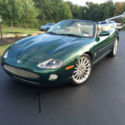 2005 JAGUAR XKR SUPERCHARGED CONVERTIBLE BRITISH RACING GREEN / TAN
2005 JAGUAR XKR SUPERCHARGED CONVERTIBLE BRITISH RACING GREEN / TAN
Mileage: 50,039
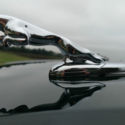 NICEST JAGUAR IN CAPTIVITY! BRITISH RACING GREEN SOVERIGN WITH ONLY 33K MILES!
NICEST JAGUAR IN CAPTIVITY! BRITISH RACING GREEN SOVERIGN WITH ONLY 33K MILES!
Mileage: 33,425
